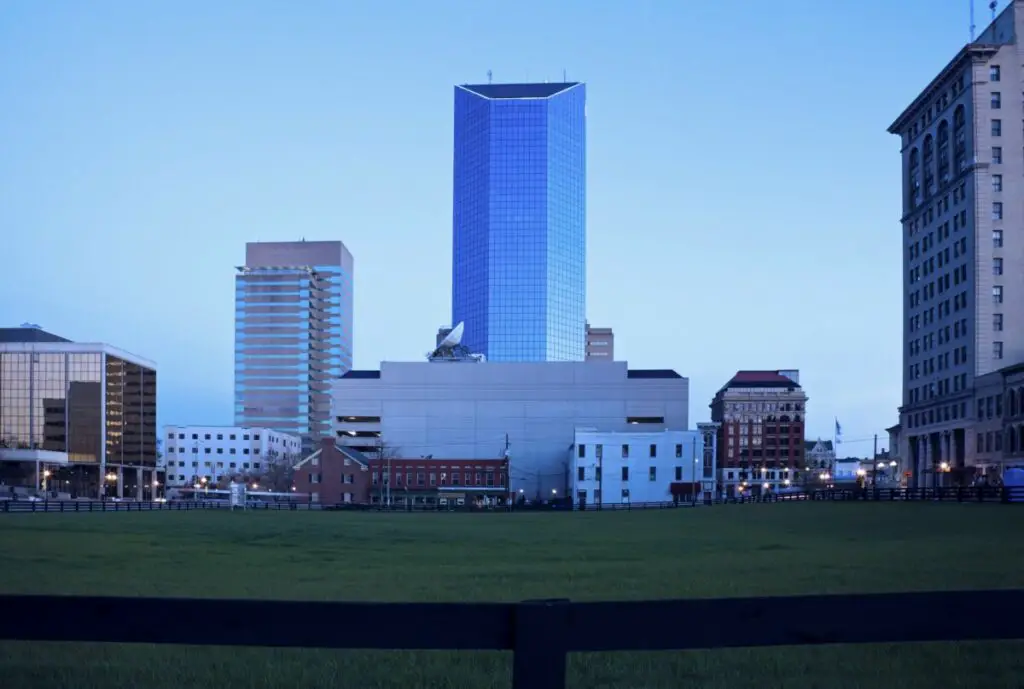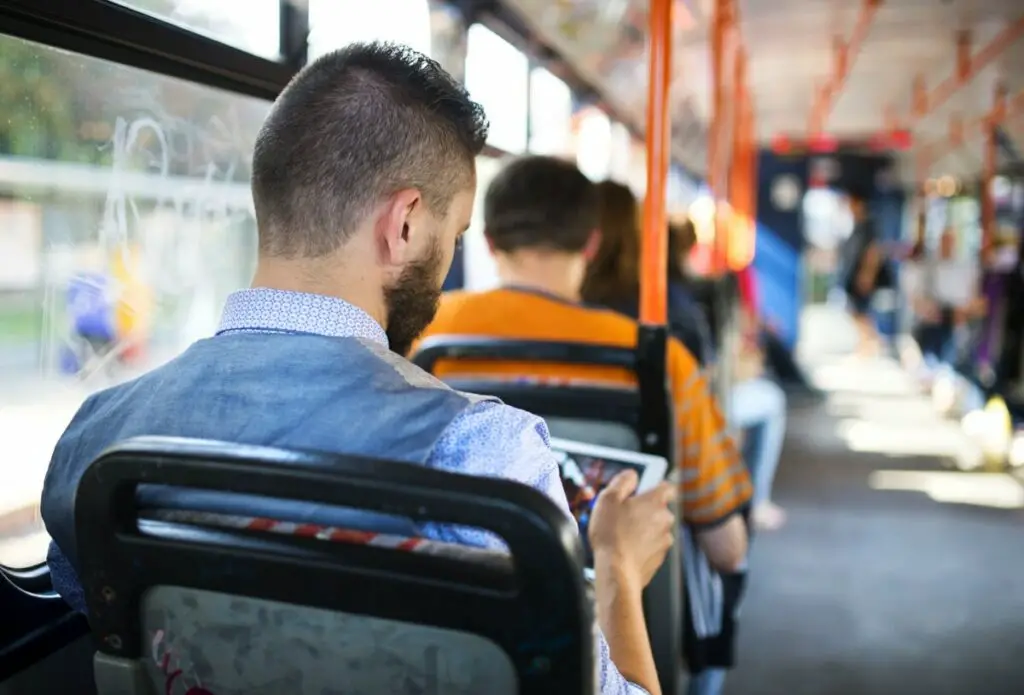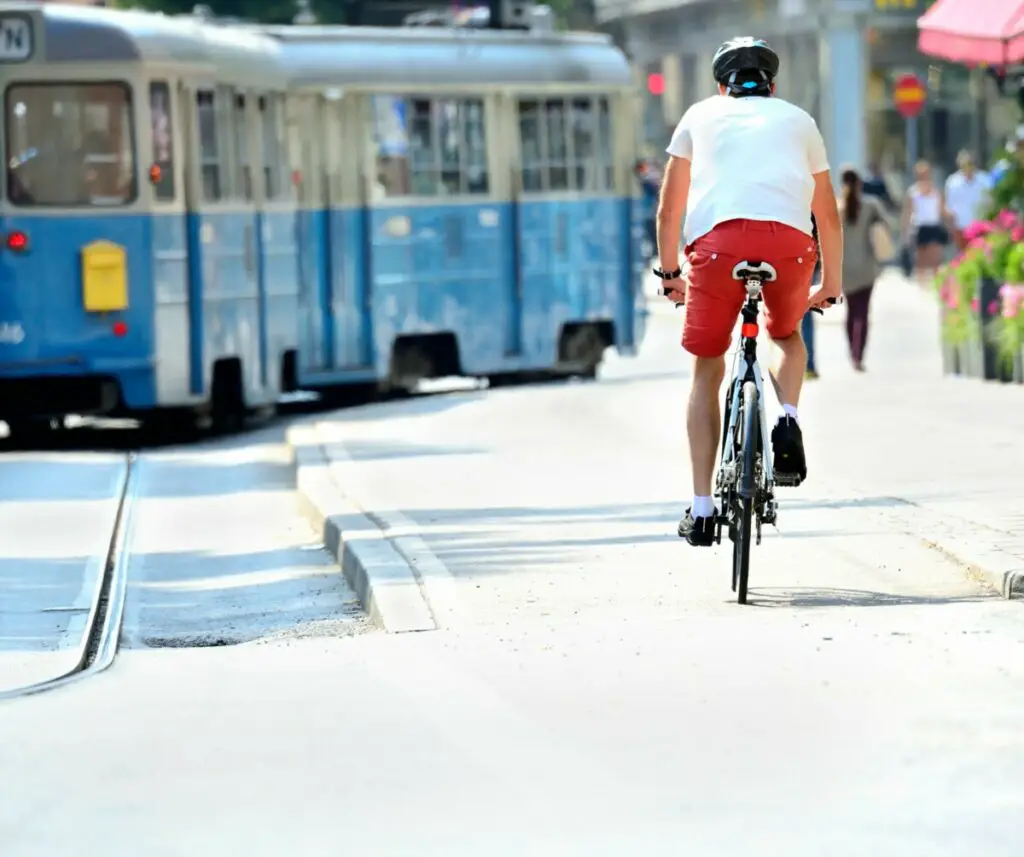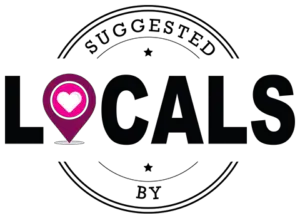
When going to a place which you aren’t familiar with, it can be easy to get lost. Since you don’t know any of the landmarks as well as the ways that residents get around the city it can feel impossible to orient yourself. This is where public transportation should step in, but is there public transportation in Lexington, Kentucky?
Lexington, Kentucky has a very simple public transportation system for a city its size. The city mostly relies on its bus network centered in downtown Lexington. This network of buses is supported by a bike share program that allows residents and visitors to make short quick trips around Lexington.
While it is good to know that you have options for getting around the city, you may want to know how to use each of these options effectively. Here are some tips about each of these options that will help you prepare for your next trip to Kentucky.
How to Use the Bus in Lexington
The main and only reliable way to get around Lexington, Kentucky via public transportation is to use the city bus system. In all honesty, the best way to get around the city is by using a car of your own and driving it to each of your destinations. The city of Lexington is almost 300 square miles, making it larger than cities like Chicago and just smaller than cities like New York and Memphis. Due to its size a relatively small population, Lexington is a difficult city to navigate quickly.
According to local residents, the quickest way to get around the city is by car. Buses can take 3 to 4 times as long as a car to traverse the same distance. However, not everyone will have access to a car or feel comfortable driving in Lexington during peak rush hour. In this case, many residents recommend riding the bus, stating that it is “better than nothing”.
A simple way to think of the bus system in Lexington is that of a bicycle wheel. The downtown portion of Lexington can be considered the middle of the wheel, with each of the different bus lines moving outward like the spokes of the wheels. There are a handful of connections between these different spokes, but most of the bus lines are just an out and back line connecting downtown Lexington to one of the outlying areas of the city.
While there is a big need for buses, the biggest users of the city bus system are likely university students. With this need in mind, we will put a particular focus on the routes that serve the university area. If you are interested in a more in-depth look at all of the bus lines in Lexington, here is a webpage with a map of that information. Each of these bus lines costs $1 for a single ride or $3 for a day pass. Students, however, can ride free with a university ID. With that in mind, here are the bus lines that university students will be most interested in.
is a webpage with a map of that information. Each of these bus lines costs $1 for a single ride or $3 for a day pass. Students, however, can ride free with a university ID. With that in mind, here are the bus lines that university students will be most interested in.

Bus Lines Connected to the Univesity of Kentucky
One of the biggest destinations in Lexington, Kentucky is the University of Kentucky. This is the biggest university in the state of Kentucky by enrolment, as well as the largest school in Lexington. Many of the students at the university do not have access to cars to help them get around the city. Since the city is so large, the students need help to get around the city. That is where these bus lines come into play.
There are a total of four different bus lines that connect to the University of Kentucky campus in some way. Each of these bus lines provides a way for students to ride off of campus and explore the city around them. To help you see how these bus lines are necessary, we will take a brief look at each line and see where it leads.
The first of these bus lines is the UK Yellow Route. This bus line is relatively simple and is entirely geared toward students at the university. The bus starts down by the UK Good Samaritan Hospital, one of the largest hospitals in the city. From there, it starts to climb towards the University of Kentucky campus. Weaving through the city, it passes the main university campus as well as the university library, the student center, and the student housing areas.
After passing the university campus, the bus line continues until each reaches Kroger Field. Kroger Field is the football stadium for the university which hosts a variety of sporting and entertainment events for the university. Once the bus makes a stop at the football field it turns around and follows the same route back down to the hospital.
The next bus line that serves the university is the UK Blue and White bus route. This bus line covers similar destinations to the Yellow line from earlier but goes about it in a different way. While the Yellow Line was a singular out and back bus route, the Blue and White Lines go in more of a loop. This line does reach as far north as the Yellow Line. It starts at the University of Kentucky Healthcare center.
Following the same roads as the Yellow Line, the bus makes its way up to the university campus. Along the way, it passes the same stops like; the Library, housing areas, and the UK student center. After passing the campus, the bus makes a stop at the football stadium. On the way back from the stadium, instead of following the same route, the bus turns to the west before following a road on the west side of the UK campus. By making this turn the route turns into a loop.
The next two bus lines help connect the university campus to areas of Lexington that are further away. The first, Routh 16 connects university students to neighborhoods to the southwest of the UK Campus. The bus starts at the medical area north of the University before passing the university campus. Passing the campus, the bus heads south before making a big turn to the west towards the Garden Springs district. Once here the bus turns around and heads back along the same route.
The final of these four routes is the Route 5 bus. This connects the university campus to the southern edge of the inner city “loop” and to the South Park Shopping area. The bus starts in downtown Lexington and heads south along Nicholasville Road. Once the bus reaches the intersection of Nicholasville and Man O War Blvd, it turns around and heads north back towards downtown Lexington.
How to Use Lexington’s Bike Share Program

Another option to get around Lexington is to use the bike share program that is sponsored by the city. A bike share program is where a group, usually a private company, provides a city with a fleet of bicycles. These bicycles are then left at “stations” around the city and can be rented by citizens for short trips around the city.
In Lexington, the bike share program is maintained by the company Bird . Bird provides electric bikes and scooters to help you make short trips quickly. You will want to use the scooters if it is just you riding, and the bikes if you are carrying a bag or groceries. While riding you need to remain within the designated area in the city. Make sure to always wear a helmet and respect the rules of the road. Remember that this is a new program, so be careful. Pedestrians and drivers may not be used to sharing their space with riders yet.
. Bird provides electric bikes and scooters to help you make short trips quickly. You will want to use the scooters if it is just you riding, and the bikes if you are carrying a bag or groceries. While riding you need to remain within the designated area in the city. Make sure to always wear a helmet and respect the rules of the road. Remember that this is a new program, so be careful. Pedestrians and drivers may not be used to sharing their space with riders yet.
To use a bird bike or scooter, find one of the stations scattered around the city. By using the Bird app, you will be able to unlock one of the vehicles and use it to ride around. Generally, you will be charged when you unlock the bike and then an automatic fee the longer you use the bike. Make sure to return your bike to a designated station once your ride is finished. Bikes that are abandoned outside of one of these areas may incur their rider additional charges.
Is Public Transportation Important In Lexington, Kentucky?
This all leads to the big question; Is public transportation important in Lexington? After looking at some forums from residents discussing this topic here were some of the most common ideas expressed.
One resident pointed out several issues with the bus system, including unreliable arrival times at bus stations, drivers willing to skip stations to save time, and bus stations without covers or seats. Others talked about long waits if you need to transfer between bus lines. For bikers, one resident said, “[Be] careful of Lexington drivers when biking, though, you’ll be seen as a pest to the majority, and they aren’t shy to turn bike lanes into an extension of their own.”
pointed out several issues with the bus system, including unreliable arrival times at bus stations, drivers willing to skip stations to save time, and bus stations without covers or seats. Others talked about long waits if you need to transfer between bus lines. For bikers, one resident said, “[Be] careful of Lexington drivers when biking, though, you’ll be seen as a pest to the majority, and they aren’t shy to turn bike lanes into an extension of their own.”
Residents were much higher on the buses dedicated to serving the university area. One resident even commented that the campus bus system “wasn’t bad,” which is the highest praise I was able to find about the public transportation system.
even commented that the campus bus system “wasn’t bad,” which is the highest praise I was able to find about the public transportation system.
In summary, it seems like the Lexington public transit system has serious flaws and generally is considered to have poor quality. However, as long as you are deliberate about how you use it, and don’t rely on it to get everywhere in the city, it is still usable by residents and visitors alike.
